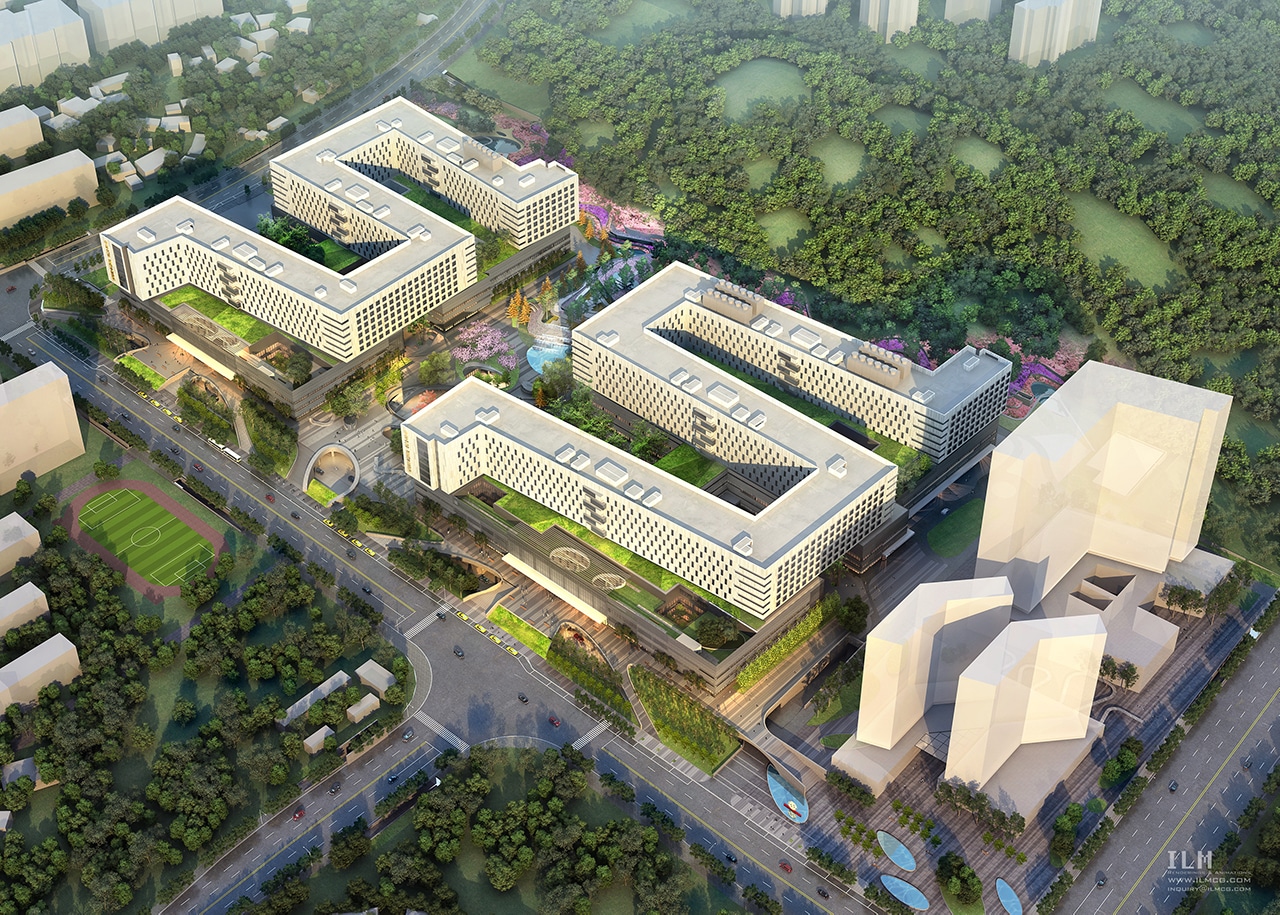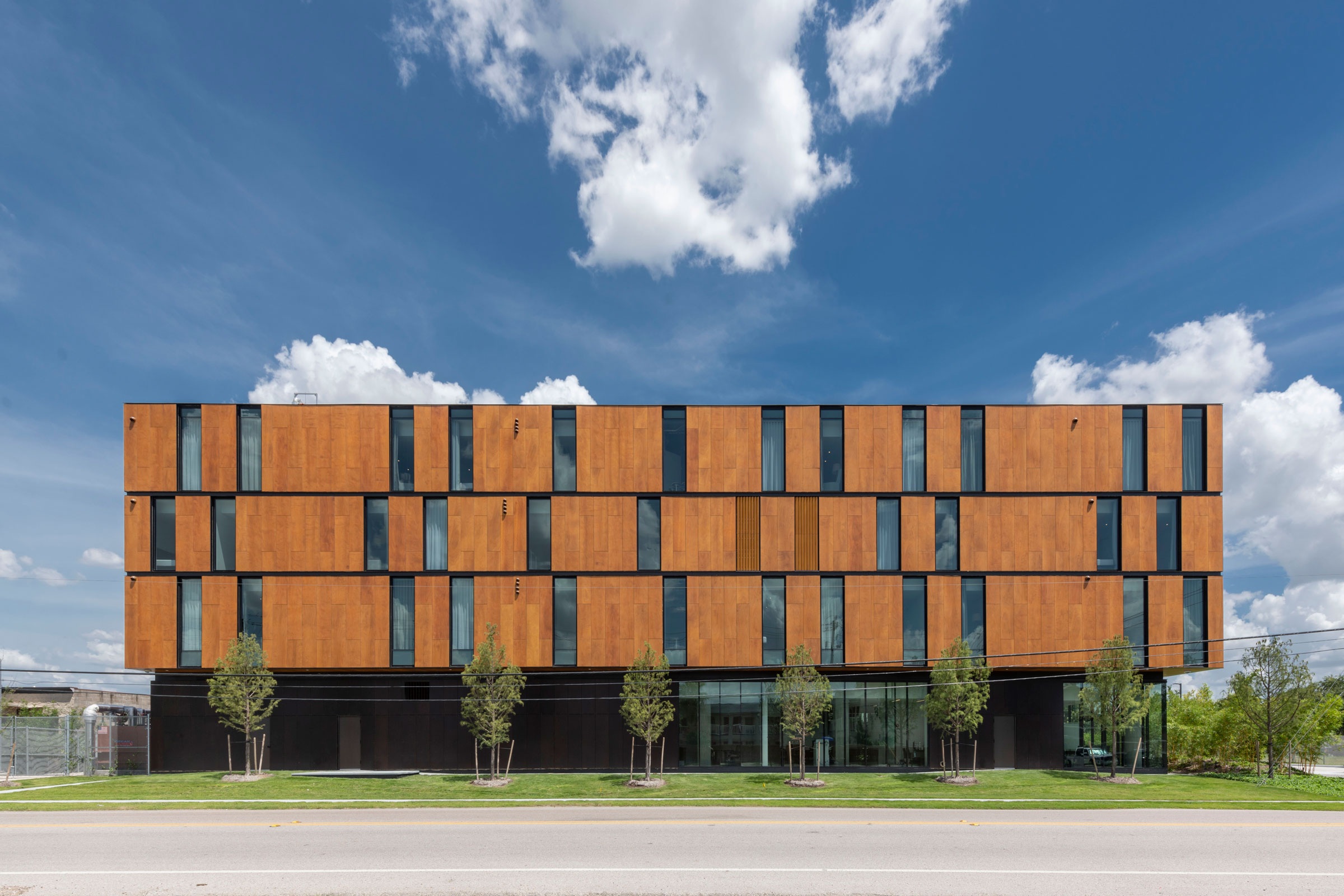Story at a glance:
- Fifth XiangYa Hospital is set to open in China but has been winning awards long before its completion.
- The hospital in south central China is surrounded by lush gardens that bring beauty and healing to patients.
- The hospital is expected to attract more than 100,000 patients each day when it opens.
For years before it’s due to open, the architects behind the 5.6 million square-foot Fifth XiangYa Hospital in China continue to be recognized for their work. Payette, the architectural firm behind the inspiring project, won the 2015 AIA National Healthcare Design Award, more than five years before any patients were likely to receive care at the facilities.
Located in Changsha, the most populous city in south central China, the hospital is expected to accommodate more than 100,000 patients per day when it opens. Two patient hospitals, with 2,500 patient beds total, will tower above the shared diagnostic and treatment center when the project is expected to be complete in 2020.
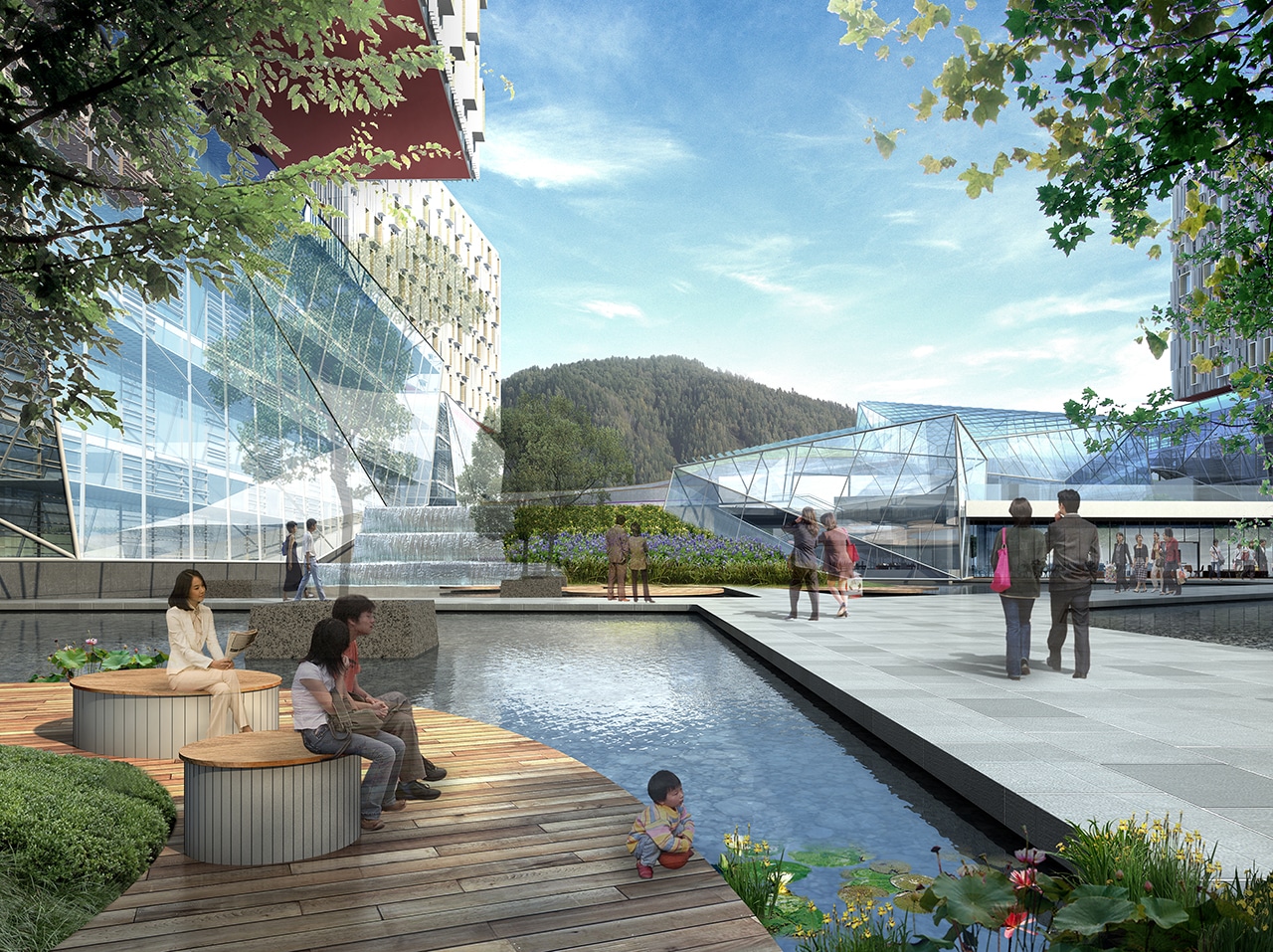
The hospital is immersed in nature. Courtesy of Payette.
Fifth XiangYa has been nicknamed a “hospital in a garden,” as nature will be integrated throughout the facilities, from natural ventilation to scenic views. The hospital is also close to Xianguling Park—a mountainous forest region and healing destination in the area—as well as the Hunan Province.
“The site design cultivates these regional features and brings their spirit to the hospital landscape,” says Adam Anderson, a landscape architect with Payette, the firm behind the task.
You’ll find even more nature in this project at the accessible gardens and courtyards for patients, staff, and visitors. Light monitors and windows will provide plentiful natural light and integrate the topography of the site into the hospital. The design team continues to emphasize natural light and beautiful views for patients.
“Our buildings and landscapes integrate into the ecological, environmental, and cultural systems of a site,” Anderson says.
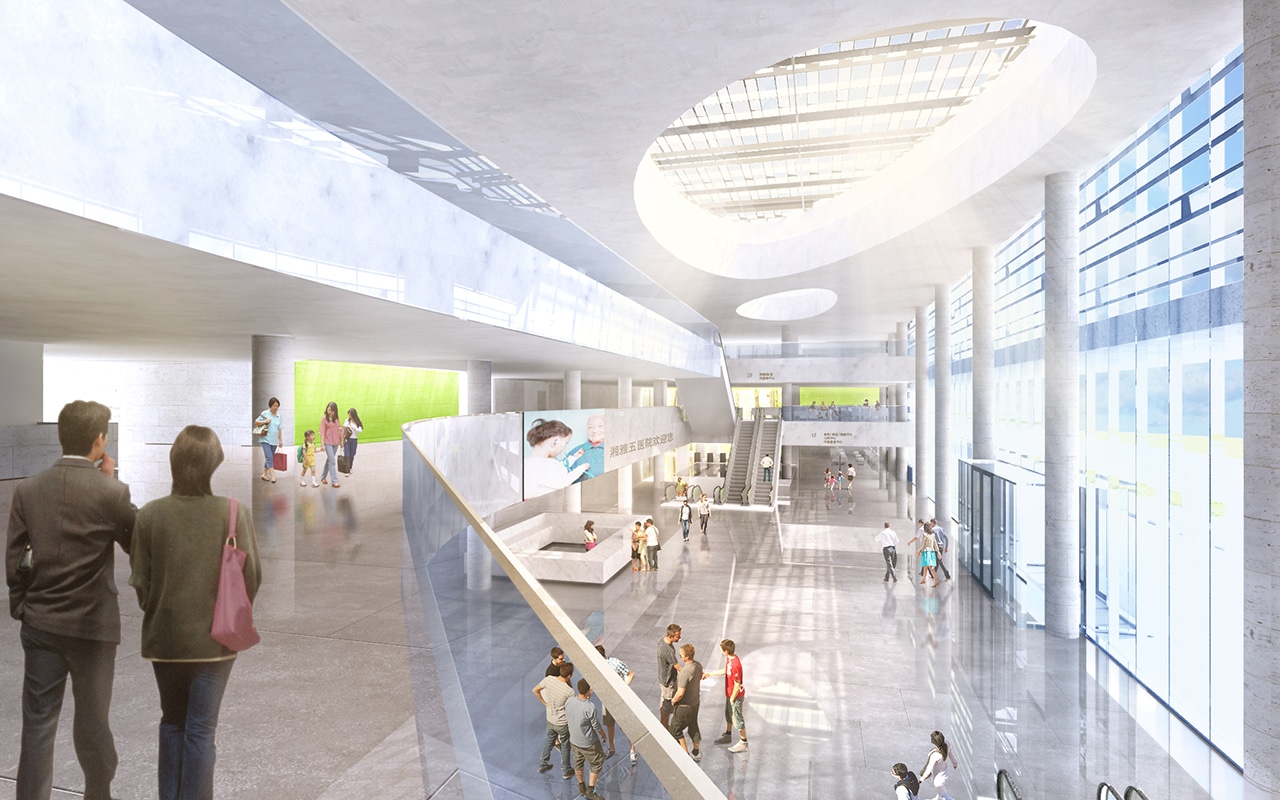
The big windows bring light and a sense of openness to the hospital. Courtesy of Payette
In patient rooms, architects have designed “family nests,” or large window seats to maximize views while also reducing thermal radiation. The nest is designed as a place of safety and respite for visitors, providing a clearly identifiable space within the family zone of the patient room.
The glass of the window sits about halfway back in the wood box, allowing the exterior wood to sufficiently shade the façade, as most of the family nests face either south or east. Payette’s focus on integrating ecological and cultural systems will result in the hospital’s maximum sustainability as well as more comfortable spaces for hospital patients and visitors. “The design and form of the building and landscape is a result of these two ambitions,” Anderson says.
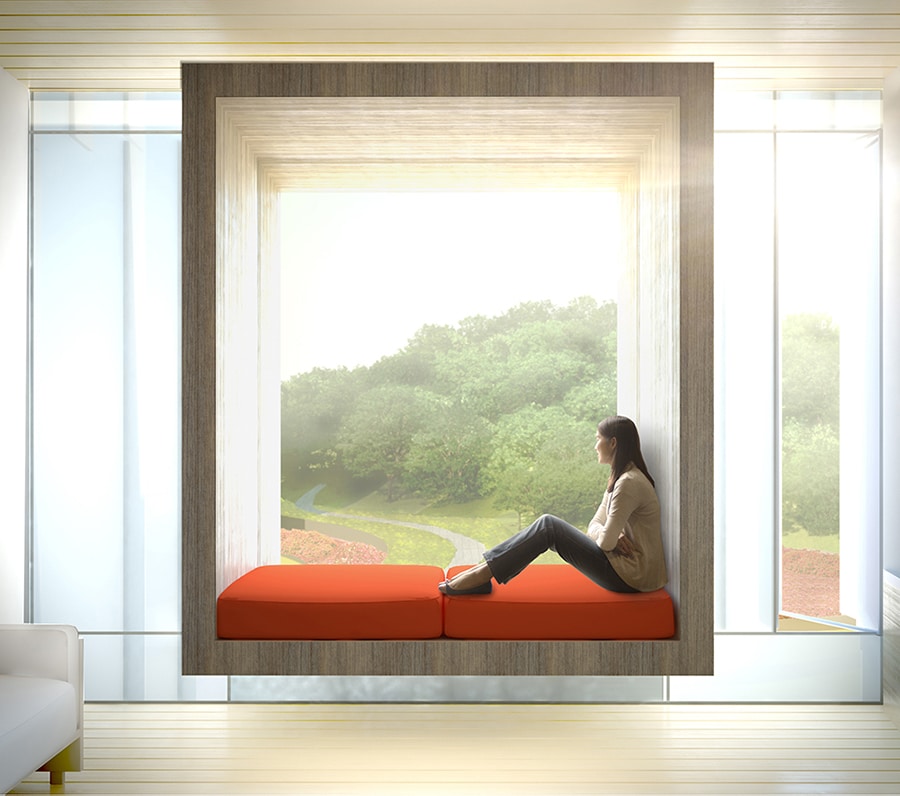
Articulated as a wooden box that extends on both the interior and exterior of the façade, the bottom edge of the nest is at sitting height, and it creates the main view window from every patient room in the hospital. Courtesy of Payette
Sustainability is a goal of every project at Payette, and they set energy reduction targets for everything they do. At Fifth XiangYa, they will plant 1,200 canopy trees to provide hospital patients, staff, and visitors an enjoyable outdoor space while also limiting heat in the building and reducing the energy spent on cooling.
Of course, building a multimillion-square-foot facility in a mountainous landscape is no easy task.
“Perhaps the most challenging part of this project was to manage its massive scale,” says Leon Drachman, design principal and principal in charge at Payette. “It was critical to ensure a sense of intimacy and personal comfort within this immense building complex.” The building is expected to experience a 66% reduction in energy use compared to the 2030 baseline.
Project Credits
Project name: Fifth XiangYa Hospital
Location: Changsha, China
Completion: 2020
Size: 5,600,000 square feet
Architect: Payette

